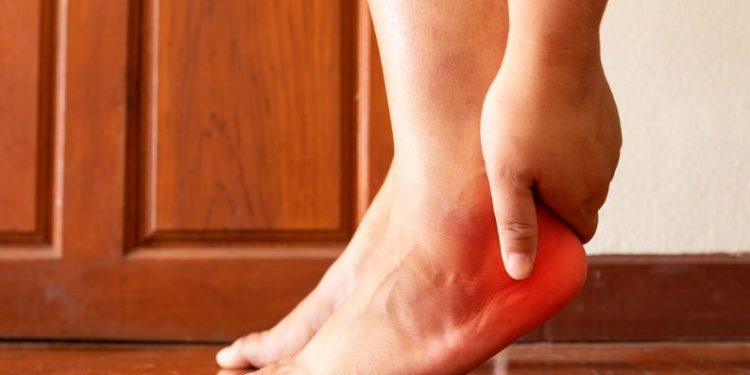Plantar fasciitis is a painful condition that affects both feet. It causes heel pain when standing or flexing. The pain is usually caused by repeated stress and impact on the plantar fascia, a band of tissue that runs from the heel to the toes. Symptoms are most often present in the morning or after a prolonged period of sitting or standing. In addition, people with this condition may experience burning or tingling in their foot.
Although this condition can be difficult to diagnose, it can be treated with a variety of options. Your healthcare provider can help you find a treatment that will relieve your symptoms and improve your quality of life. Depending on your situation, the treatments can be simple, such as resting, or they can involve more complex measures, such as surgery.
The most common form of treatment for heel pain is nonsteroidal anti-inflammatory drugs (NSAIDs). These drugs can reduce inflammation. However, they should not be taken for more than 10 days without talking to your healthcare provider.
Another option is extracorporeal shock-wave therapy, or ESWT. Shock-wave therapy works by bombarding the affected area with high-pressure sound waves. This helps increase blood flow and stimulates healing. Typically, patients receive three weekly sessions.
Patients can also seek the advice of a podiatrist. They will be able to rule out other injuries, such as a strained back, and will also be able to recommend treatment that will speed up your recovery. Other treatment options include wearing orthotics, or wearing supportive footwear. A plaster cast over the foot and ankle can also alleviate long-term heel pain.

Nonsteroidal anti-inflammatory drugs may be prescribed in pill or patch form. Some are available over the counter, but others require a prescription. To reduce inflammation, the doctor may prescribe corticosteroid therapy. Using a cold compress can also reduce the inflammation of plantar fasciitis. Cold compresses can be made by placing a frozen water bottle on the foot.
You should try to avoid activities that put additional stress on the foot. For example, you should not squat, sit on the floor, or stand for too long. Also, you should use a cushioned foot insert. If your heel pain does not go away, it is time to see a podiatrist. Besides recommending a treatment plan, your provider can help you find a pair of shoes that will support your foot properly.
During your visit, your provider will do a physical exam. During this exam, your provider will look at your feet and check for imbalance, reflexes, and muscle tone. He or she will then ask you to describe the pain and how you feel it at different times during the day. X-rays or MRIs may be used to rule out other conditions.
Aside from treating your symptoms, your provider may suggest changes in your lifestyle to help ease the pain. Resting your feet, taking NSAIDs, and using orthotics can help ease your pain. Putting a night splint on your foot can help prevent your plantar fascia from tightening up during sleep.









